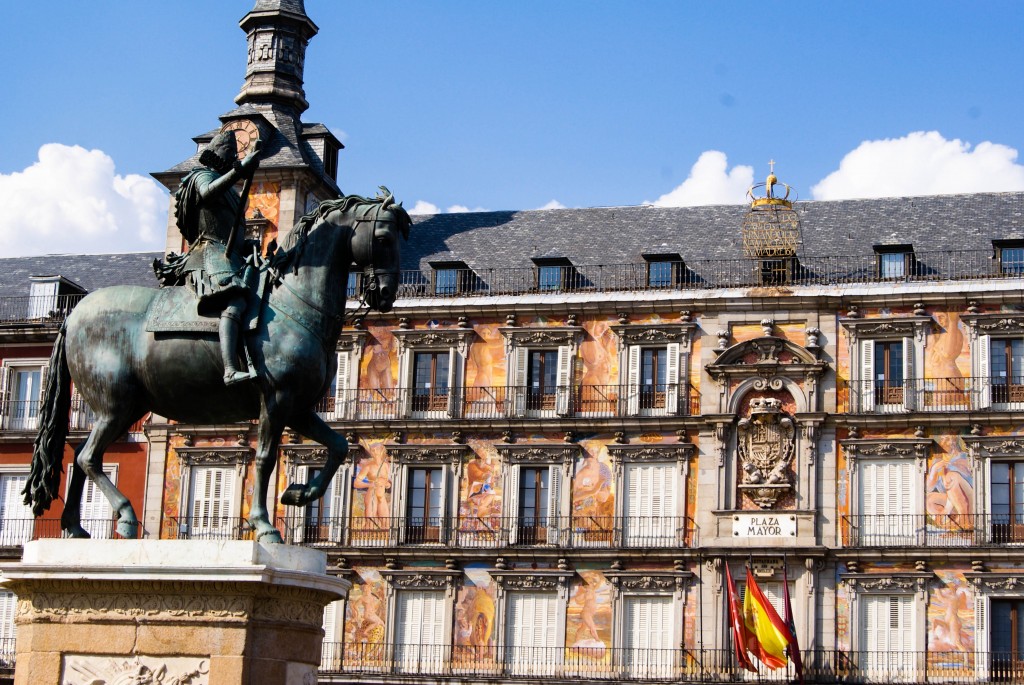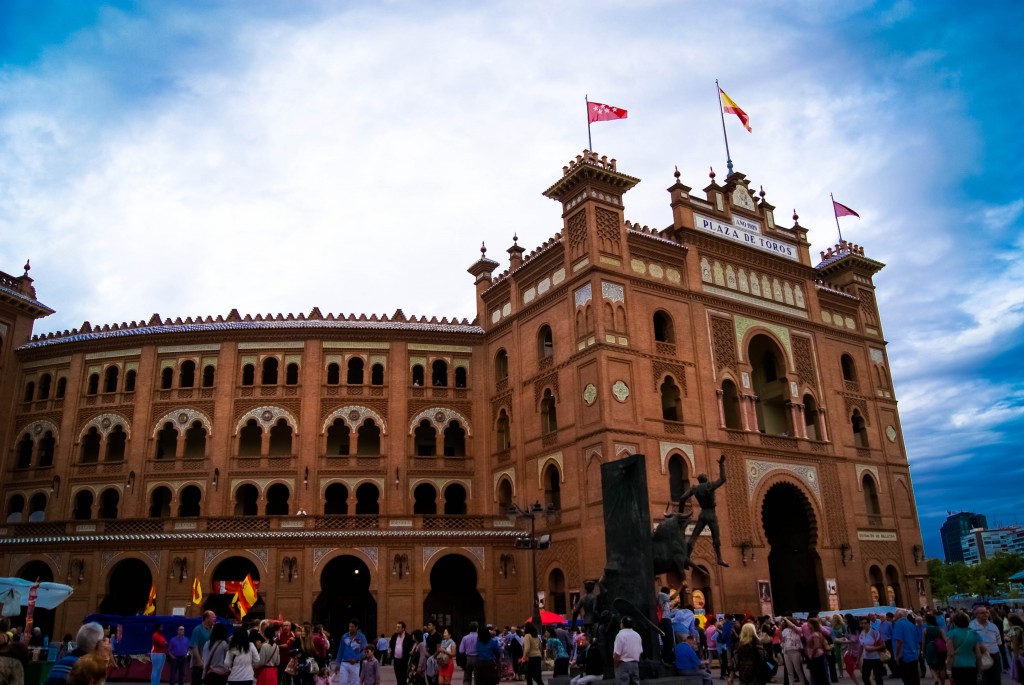They say that if the conditions are right and you are close enough to the ring, you can smell the blood being spilled at a bullfight in Spain. Certainly the gruesome and violent nature of this centuries-long Spanish tradition has been condemned by animal rights activists internationally and has even prompted the Spanish province of Catalonia to outlaw the sport all together. However the sport endures, especially in the southern region of Andalucía and in Madrid.
Plaza Mayor, Madrid
It was mostly curiosity that compelled us to buy tickets to a bullfight at Madrid’s legendary Las Ventas bullring. Admittedly, we were also swept up in the romantic idea of attending a bullfight in Spain. Visions of passionate crowds yelling “olé” in unison as brave and daring toreadors in gleaming costumes waved colorful capes in the air seemed to distract from the fact that the bulls were there to be killed. This fact only became more and more clear in the days leading up to the bullfight. Proponents of bullfighting defend the sport as a wholly invaluable cultural practice that has defined Spanish culture around the world. While the iconic status of the toreador cannot be denied, one must ask if this is worth the lives of innocent animals. To go even further, do the Spanish people want to be known as a culture that celebrates the slaughter of animals for entertainment? Pushing aside these conflicting feelings was not easy but necessary if I wanted to remain objective. So on a drizzly Sunday afternoon in late September, we caught the metro to Las Ventas, hoping to be enlightened, but anticipating sadness.
Bullfighting in Spain generally takes place on Sunday evenings from mid-spring to early autumn. We were fortunate to be in Madrid for one of the last corridos of the season. We climbed the stairs, away from the dark, humid metro and emerged to stand in front of the brilliant Las Ventas bullring, widely regarded as the “Madison Square Garden” of all bullrings, where only the best bullfighters have the privilege of performing. The graceful arches and mosaic details of the building helped establish an undeniable sense of place. It felt as if we were in the inner most chamber of the heart of Spain. I expected to see tourists, like us, lured to the bullring out of morbid curiosity. But there were also older Spanish gentlemen who looked as if they had been coming to bullfights their entire lives. There were families with kids, young couples and even bands of old ladies with colorful umbrellas. Once inside the bullring, our anticipation was almost palpable but tinged with a tiny bit of fear. Continue reading

